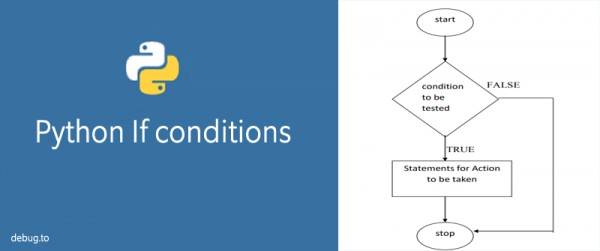In this post, we're gonna learn how to write the different types of IF Conditions in Python.

Before we getting started, let's first know more about Conditions
What're Conditions?
- Conditions are a decision-making statement.
- Perform different actions depending on a boolean condition that may be true or false.
Conditions In Python
- If statement: is used to specify a block of code to be executed, if a specified condition is true.
- If - else statement: is used to specify a new condition to test, if the first condition is false then it will be redirected to the else part
- ELIF Statement: The elif keyword in pythons is the way of saying "if the previous conditions were not true, then try this condition".
Python If Statement
- Python if statement is the easiest way to have a decision.
- Use the if statement to specify a block of Python code to be executed if a condition is True.
- It must end with a colon (:)
- (white space at the beginning of a line) to define the scope in the code
syntax :
if condition
#block of code to be executed if the condition is True
example:

output :
b is greater than a
Python (If–else) Statement
- It is used when you want to choose between two alternatives.
- An if statement can be followed by an optional else statement, which executes when the first condition is FALSE.
- (white space at the beginning of a line) to define the scope in the code of if and else
syntax
if condition
#block of code to be executed if the condition is True
else
# block of code to be executed if the condition is False
Example

Python Elif statement
- The elif keyword in pythons is the way of saying "if the previous conditions were not true, then try this condition".
- Also, make sure that the white space at the beginning of a line is to define the scope in the code of if and Elif.
syntax
if condition
#block of code to be executed if the condition is True
Elif condition
# block of code to be executed if the condition is False
Elif condition
# block of code to be executed if the condition is False
.
.
.
Example

Nested If Statement
you can place an (if statement / if..else statement / if..elif statement) inside another statement and this called "nested"
syntax
if condition:
if condition:
statements
else:
statements
else:
statements
Conclusion
In this post, we have learned how to write different Conditions in the Python programming language.
See Also